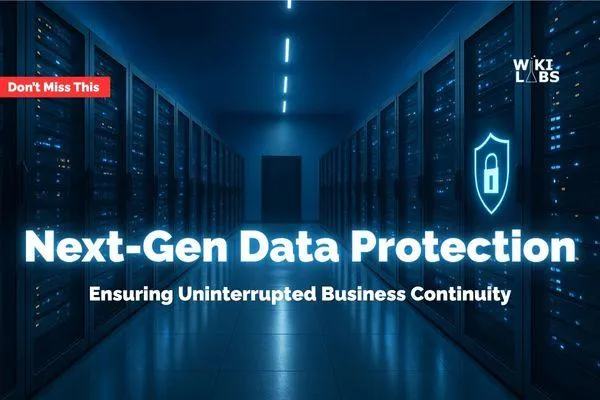
Protect Your Data, Protect Your Business
Next-Gen Data Protection: Ensuring Business Continuity
Pillar / Category: Data Protection & Business Continuity
Purpose: To outline advanced data protection strategies—including automated backups, immutable storage and disaster-recovery orchestration—that keep operations online and data safe, even in the face of major incidents.

Introduction
In an always-on digital economy, data is the lifeblood of modern organisations. A single hardware failure, cyber attack or human error can halt operations, erode customer trust and incur significant financial losses. Traditional backup solutions—relying on nightly snapshots or tape archives—often struggle to meet today’s demands for rapid recovery and zero-tolerance for downtime. This article explores next-generation data protection techniques that guarantee continuity and minimise disruption.

The Cost of Data Loss
Financial impact: Unplanned downtime can cost enterprises an average of RM 1.2 million per hour.
Reputational damage: Customers expect uninterrupted service—each outage risks losing credibility.
Regulatory penalties: Failing to meet data retention and recovery mandates can result in hefty fines.
Without a robust protection strategy, businesses remain exposed to these costly risks.
Worried about the impact of downtime on your business? Contact us for a free data risk assessment today.

Next-Gen Data Protection Techniques
Continuous Data Snapshots
Capture data changes in near-real time to reduce potential data loss to minutes rather than hours.Immutable Storage Solutions
Store backups in write-once, read-many formats to safeguard them from ransomware or accidental deletion.Automated Disaster-Recovery Orchestration
Define end-to-end failover and recovery workflows as code, eliminating manual errors and guaranteeing consistent restores across on-premises and cloud environments.Policy-Driven Retention & Tiering
Automate data lifecycle management—keeping recent snapshots on high-performance storage while archiving older data to cost-effective tiers.

Real-World Success Story
A leading Malaysian logistics firm experienced a critical storage-array failure during peak season. With only nightly backups, their last valid restore point was 18 hours old—resulting in lost orders and customer backlash. After deploying a next-gen protection platform with continuous snapshots and immutable storage, they were able to:
Recover 99.9% of data within 30 minutes of the failure.
Shrink their recovery point objective (RPO) from 18 hours to 5 minutes.
Automate failover via a pre-tested disaster-recovery playbook, restoring services in under an hour.
This modern approach saved hundreds of thousands of ringgit in lost revenue and preserved their reputation.
Inspired by this turnaround? Reach out now to see how next-gen protection can safeguard your operations.

Getting Started with Next-Gen Data Protection
Assess Your Data Landscape: Identify critical workloads, RPO/RTO targets and compliance requirements.
Choose a Unified Protection Platform: Look for continuous snapshotting, immutability and multi-cloud orchestration.
Author DR Playbooks: Define and test recovery workflows as code before an incident strikes.
Validate Regularly: Run scheduled drills to ensure your team can meet recovery objectives.
Monitor & Optimise: Review performance metrics, refine retention policies and scale resources proactively.

Conclusion
Data protection is no longer optional—it’s a strategic imperative. By embracing continuous snapshots, immutable storage and automated DR orchestration, you can ensure uninterrupted service, defend against evolving threats and maintain compliance.
Ready to safeguard your data and guarantee business continuity?
Contact us today for a personalised assessment and demo of our next-gen data protection solutions.
References
IDC, “The Cost of Unplanned Downtime: Global Overview,” 2023
Gartner, “Market Guide for Data Protection Solutions,” April 2024
Veeam, “The State of Data Protection Report,” 2024
Forrester Consulting, “Total Economic Impact of Automated Disaster Recovery,” Q2 2023
Wiki Labs internal benchmark data, 2025
